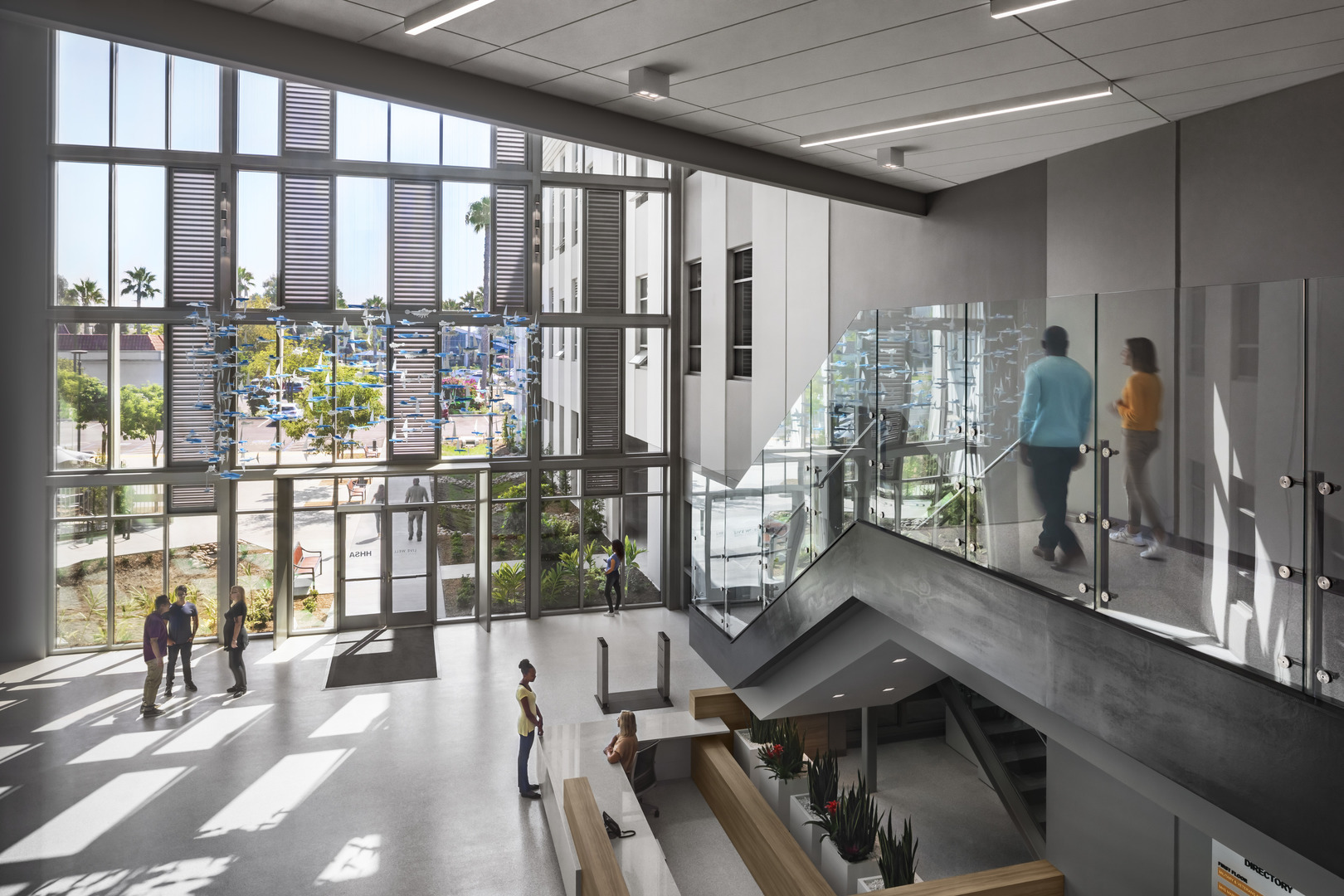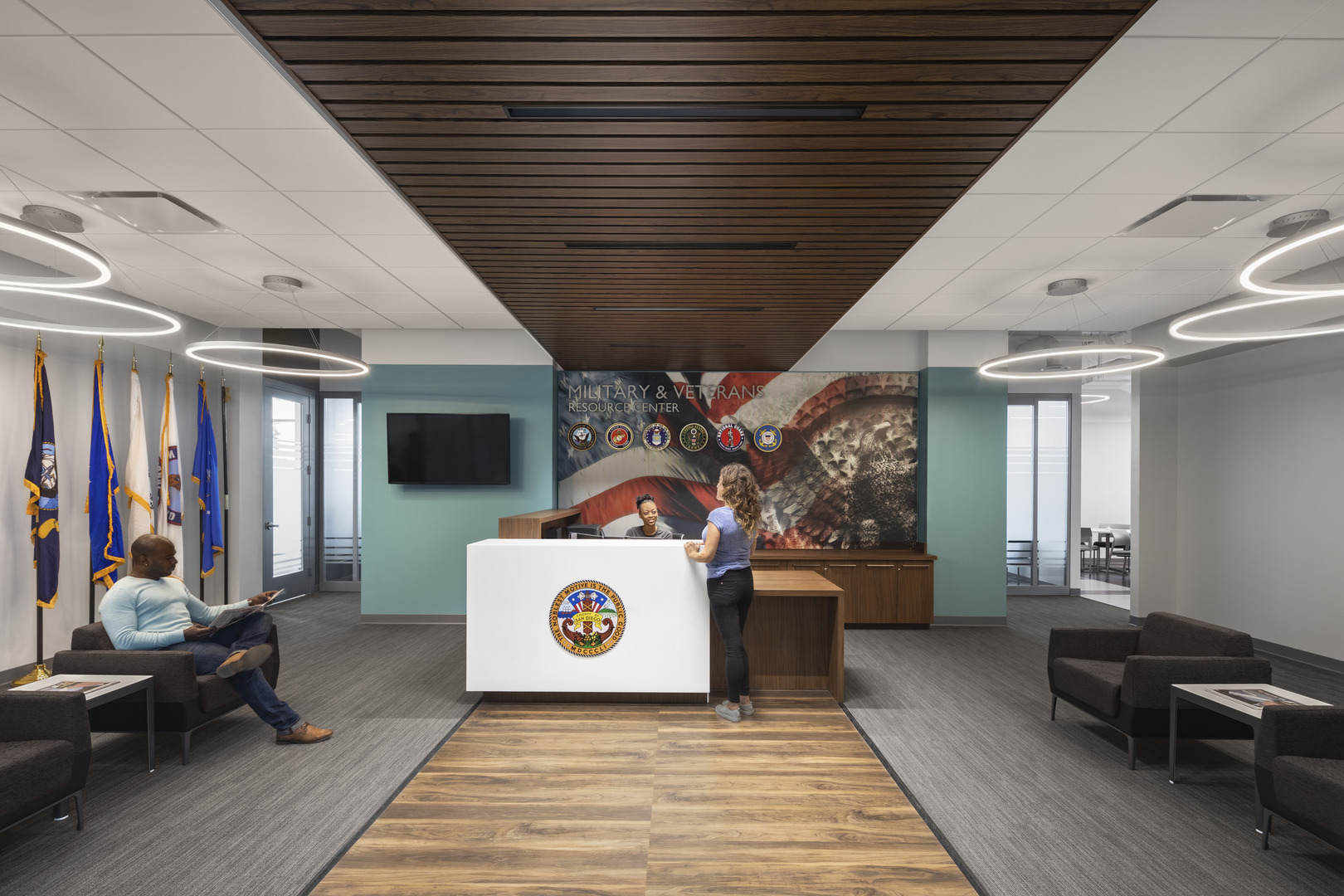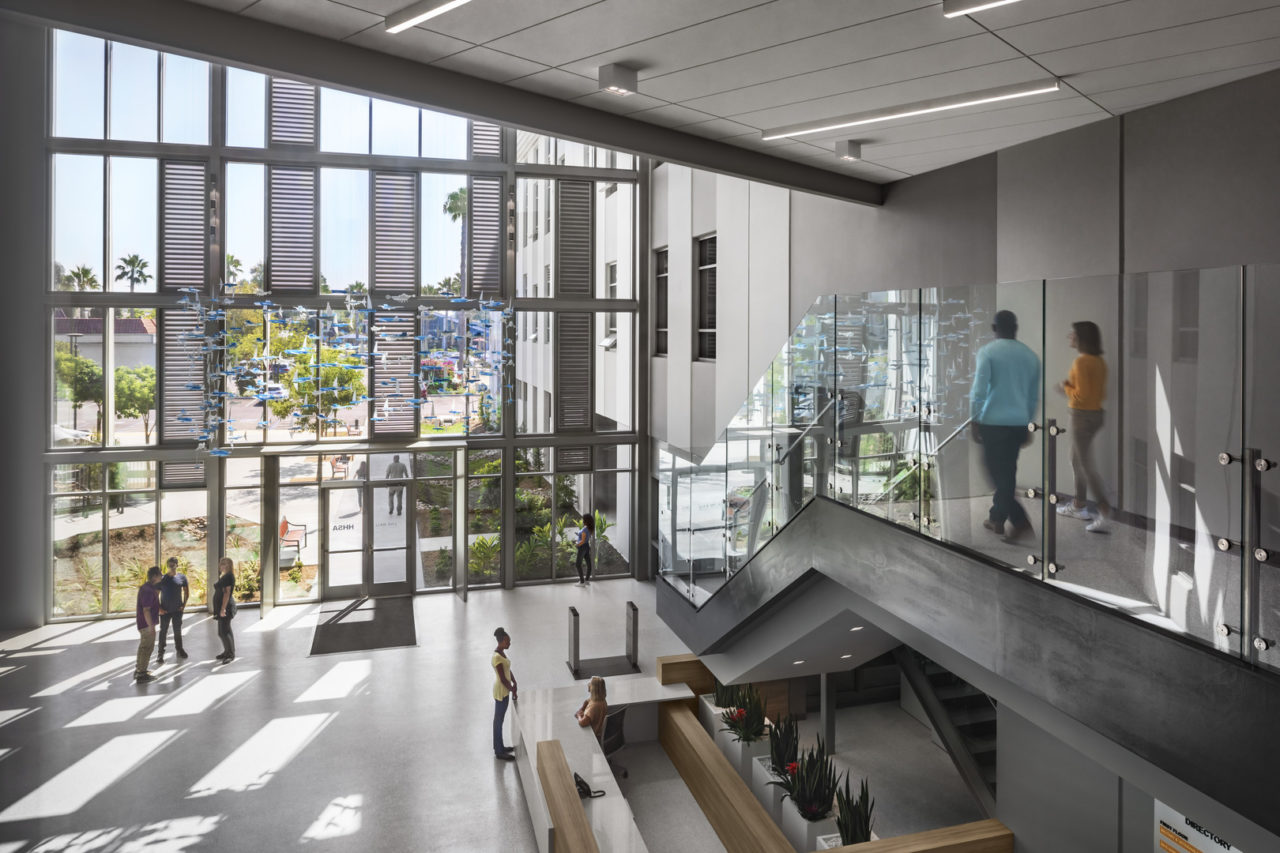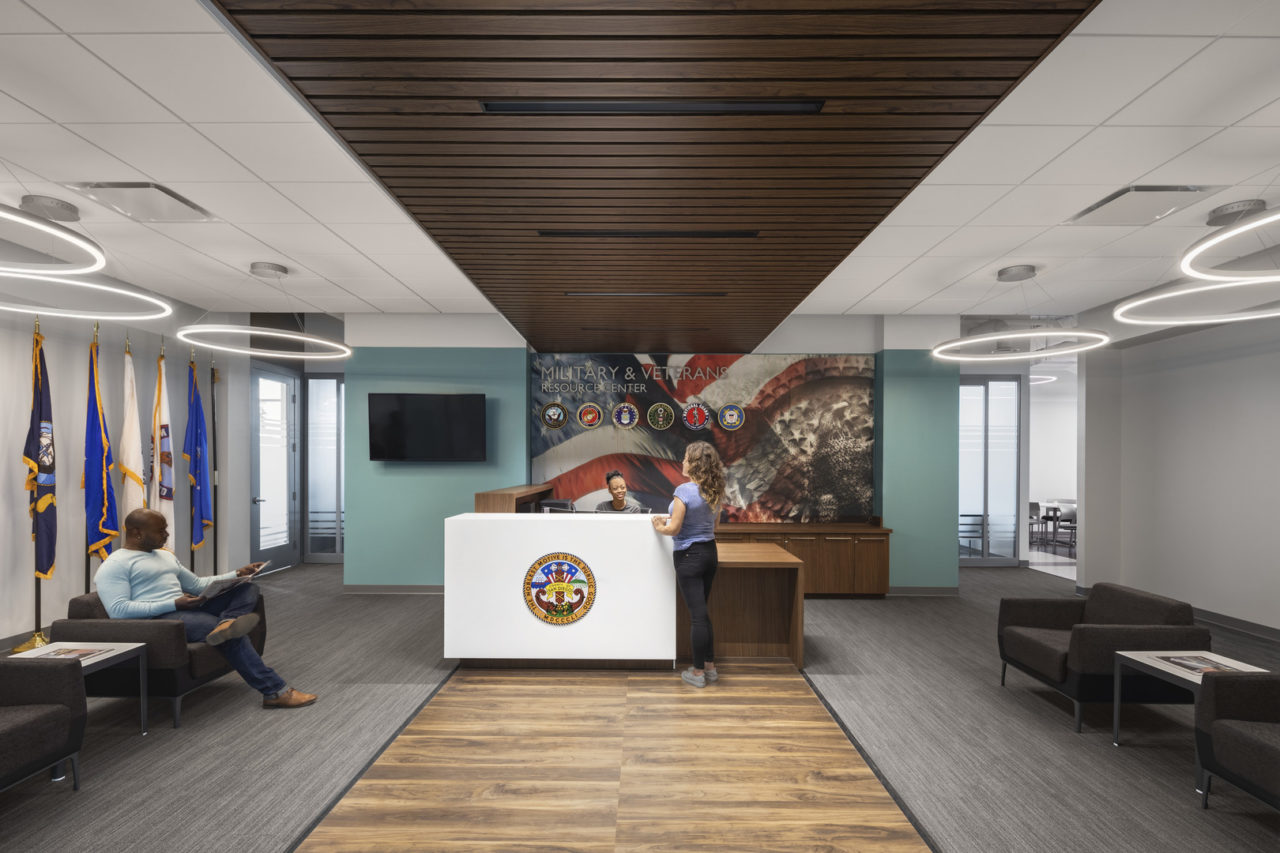Do you want to build an efficient civic building as quickly as possible? If so, then you should consider using a design build process for your next civic project.
One of the advantages of the design build trend is that it enables architects and contractors to deliver projects approximately 102 percent faster compared to a traditional design bid build. Contractors and architects can also work together to create practical, community-driven buildings. In this guide, we’ll help you decide whether a design build is the right choice for your next civic project.
How a Design Build Differs from a Traditional Build
A design build is a contractual agreement in which the general contractor leads the relationship with the client. This is what a design build looks like in practice:
- The owner brings the project to the general contractor and asks them to design it.
- The contractor seeks out an experienced architecture firm.
- The contractor and architects work closely together to come up with the best design solutions for the client.
- The contractor builds the design based on these specifications.
A design build contract is very efficient. The client only has to sign one contract and doesn’t have to hire a separate architecture firm. The design and construction process is also more streamlined. Architects get to sit in the same room with the contractor during the decision-making process, enabling everyone to stay on the same page.
This differs significantly from a traditional design bid build. In a traditional build, the process involves:
- The client contacts an architecture firm directly with project specifications and a budget.
- The architects design the building and estimate the time and resources required to complete it.
- The client bids the project out to contractors, who offer their own price and timeline estimates.
- The client selects the contractor they want to work with.
- The architect oversees the contractor’s work to completion. If the contractor runs into a problem or needs the design to change, the architect has to make revisions to the design.
This is a time-consuming, complicated, and often costly process. If architects have to make changes after the original design is complete, then it could delay the project and lead to additional unexpected materials and labor costs.
For this reason, more clients are opting to use a design build process over a traditional bid build. It’s become a trend–design builds are expected to account for 44 percent of all construction projects by 2021 and will continue to grow in popularity in the near future.
There are a number of advantages of the design build trend, especially in the civic sector. Civic projects can be complex and costly, but when clients use a design build process, they can reduce costs, finish projects faster, and design the most efficient buildings possible.
 The Advantages of the Design Build Trend
The Advantages of the Design Build Trend
The design build trend isn’t a flash in the pan. It’s a trend that will have a lasting impact on the way we design and build projects for many decades to come. That’s because there are a number of advantages of the design build trend that you don’t get with other processes. Some of these benefits are:
- Staying under budget. In a traditional design bid build, it’s easy to go over budget. That’s because the bidding environment can change significantly over the course of just a few months and the price of materials may increase. In a design build, this is rarely a problem. Architects finalize the design while the contractor simultaneously orders necessary materials. There isn’t a months-long delay between finalizing the design and opening the project for bids. This is particularly important for civic projects as the client must stick to a strict budget to maximize taxpayer dollars.
- Better organization and transparency. All sketches, order forms, and other types of documents are managed in one place and easily accessed by everyone involved in the project. This also makes civic projects more transparent because public documents are more accessible.
- Collaborating to find the best solutions. The quality of civic buildings is often better under a design build. Architects and contractors work together to find elegant solutions that meet all of the client’s needs. For example, when HMC Architects designed the County of San Diego North Coastal Live Well Health Center, we worked with a contractor to make an efficient building for the community. We used our expertise in Zero Net Energy design and biophilic architecture to create a beautiful and environmentally-friendly building. Meanwhile, the contractor took care of the complex logistics and executed our vision perfectly.
- Making fewer changes to the design. When the architect and contractor collaborate, there’s less risk of error or miscommunication. The architect won’t include any details that are over budget. Likewise, the contractor will construct the building just as the architect envisioned.
- Identifying problems early. Architects and contractors can deal with issues long before construction has begun. The earlier they can find these problems, the less expensive and time-consuming it will be to fix them.
- Speeding up the project timeline. Because architects and contractors work on the project simultaneously, certain processes are faster. For example, you don’t have to wait to order materials or waste time sifting through contractor bids after the design is finalized.
- Easing client stress and responsibility. Overall, the design build process is less daunting for clients. You won’t have to find an architecture firm and a contractor or negotiate multiple contracts. Additionally, you won’t have to facilitate communications between the architects and the contractor. Most of these details are handled for you.
For these reasons, the design build process is the best choice for most civic projects.
 Making the Design Build Process More Effective
Making the Design Build Process More Effective
While there are many advantages of the design build trend for civic projects, there are also a few challenges, such as:
- Putting more work in up-front. Architects have to make difficult decisions about the design very early on in the process.
- Organizing long lead times. Materials are often ordered and manufactured well in advance, so contractors and architects have to manage these materials effectively.
- Mitigating risk. The design build process can be risky for the contractor and the architect. If they don’t make the correct decisions early on, then it may delay the project or increase costs.
To avoid these three pitfalls, you should work with an experienced contractor and architecture firm that has done design builds for civic projects before. Usually contractors already have partnerships with architecture firms they trust, and this makes communication much more effective. They know how to make hard decisions early on, manage materials, and reduce risk.
With help from an experienced team of contractors and architects, you can take advantage of the design build trend and create the best civic buildings for your community.
How to Take Advantage of the Design Build Trend
Procuring Design-Build services requires a full assessment of the unique characteristics of this program/project and if your internal organization can implement these techniques. Adjustments are necessary that facilitates a collaborative relationship among all members. It is essential to have senior leadership on board and committed to the success of the design-build process as this sets the stage for a trusting/healthy relationship.
Typically, the owner reaches out to selected contractors, who in turn select their design partner. Successful owners that are fully committed to D-B, see value in opening the procurement to both contractor and architect to allow teaming to occur naturally. The goal is to establish procurement actions that expand teaming opportunities.
No matter which option you choose, the most important aspect to consider is whether the contractor and architects understand your specific needs and use the most effective collaboration tools, such as business information modeling. After all, while design builds are naturally more efficient than traditional builds, architects and contractors still have to put in a great deal of work. An experienced firm and contractor will have what it takes to make the most out of this helpful design trend.



